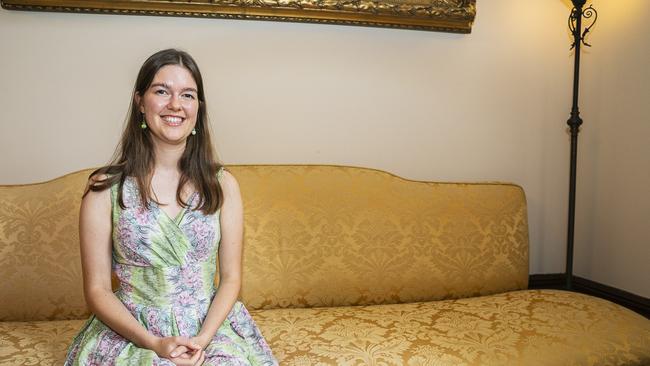‘Invisible’: Australian girls facing big school problem
An Australian teacher has spoken out about a very troubling problem girls are facing in schools right across the country.

School Life
Don't miss out on the headlines from School Life. Followed categories will be added to My News.
COMMENT
From as early as I can remember, I have always loved maths.
I love problem solving and explaining mathematical concepts. Teaching has allowed me to bridge those worlds and share my knowledge, showing my students that maths can be both practical and fun.
But for too long, maths has been seen as a “boy’s subject”. Outdated beliefs like “girls’ brains don’t work that way” and “girls just must work harder at maths” have prevented women and girls from fully exploring their potential in STEM.
Research reveals that children as young as 18 months can start to internalise gender stereotypes, leading to higher instances of “maths anxiety” and lower confidence in maths among girls compared to boys.
Sadly, the 2023 Trends in International Mathematics and Science Study (TIMSS) confirmed the severe damage caused by these stereotypes, revealing that boys significantly outperformed girls in maths in Australia.

While thankfully this isn’t repeated in my classes (shout out to my girls in year 11 maths), this nationwide trend is deeply concerning. Particularly when a significant number of emerging roles in the Australian labour market, such as in artificial intelligence, cybersecurity, clean energy technology and engineering, require proficiency in maths.
On this International Day of Women in STEM, we must elevate girls’ aspirations, engagement and performance in these crucial fields.

While I grew up with immense privilege in the leafy suburbs of Sydney, I was fortunate enough to be taught by mostly female maths teachers, who served as strong role models. They showed me how I could use my love of maths in multiple career paths. When it was time for university, I did a Bachelor of Mathematical Sciences, and that’s where I first felt the sexist sting of playing in a male-dominated discipline.
There was a glaring gender discrepancy in my tutorials. I was one of only three women out of about 30 students in the room. It wasn’t just the lack of representation; it felt like my ideas were often being disregarded when I spoke up in class. My friend, a woman of colour, confessed to me that she felt similarly invisible and disregarded. This experience among several other factors led me to study secondary education instead of pursuing an academic path in maths. Like many women who have dared to enter predominantly male spaces, I felt as though I didn’t fit, and I’d lost some confidence in my ability.
However, when I entered teaching, it was a completely different experience. My ideas were heard and valued, and I was respected by my peers. During my time in Teach For Australia’s program while studying, I was placed at Cobram Secondary College.

There, I have been lucky enough to find a supportive school environment, with strong management and a wonderful principal in Kimberley Tempest. This positive experience has restored my confidence to help my kids understand the magic of mathematics.
So, how can we inspire more girls to love maths? And once they do, how do we ensure they can pursue STEM careers without constantly having to shatter glass ceilings?
There are so many facets to addressing systemic sexism and outdated stereotypes, but one significant factor that can be altered is what girls hear at home. Particularly from their mothers, parents or guardians, who may have lost their confidence in maths along the way, plagued by those same low expectations.

It can also go beyond the language we use. Research shows that we can narrow girls’ aspirations through the toys we give them – like dolls to develop nurturing skills and building blocks for boys to encourage problem solving. While there is nothing inherently wrong with either of these, we need to provide all kinds of toys to all children, so they’re able to develop a balanced range of skills.
While I’m thankful that none of my students have implied that their gender will stop them from pursuing a career in STEM, I realise that the world outside of Cobram Secondary College may still pose gendered challenges, like what I experienced at university.
Increasing the number of female science and maths teachers, as well as encouraging more women to pursue AI, coding and engineering, will only benefit everyone. After all, you can’t be what you can’t see.
What really lights me up is helping my students. There is no greater reward than seeing the penny finally drop when they understand a concept they once thought daunting. Seeing all my students – especially the girls bombarded with limiting messages – realise that they can do it reaffirms my passion for teaching.
Lucia Sergent is a Teach For Australia Alumna and maths teacher at Cobram Secondary College
More Coverage
Originally published as ‘Invisible’: Australian girls facing big school problem




